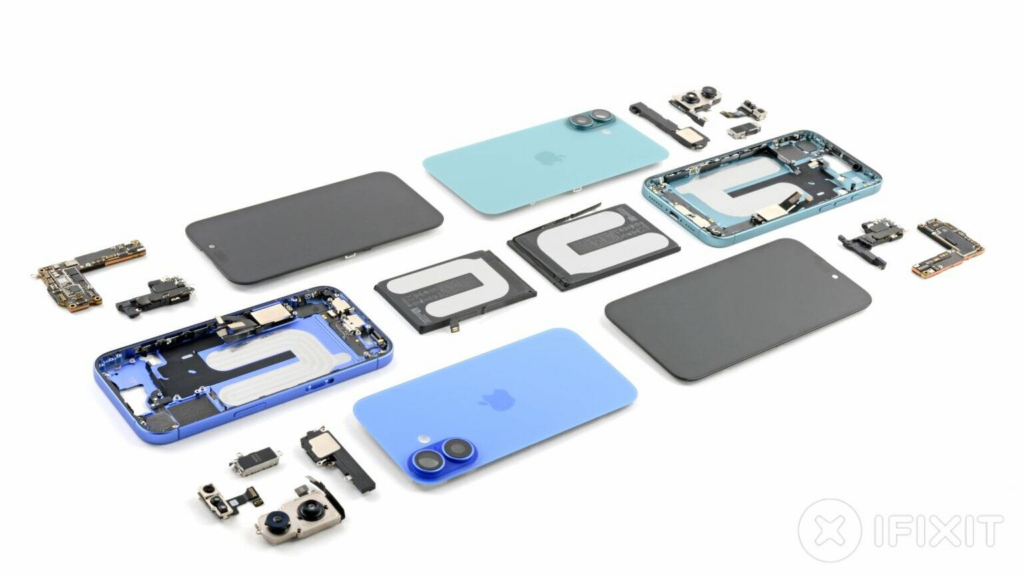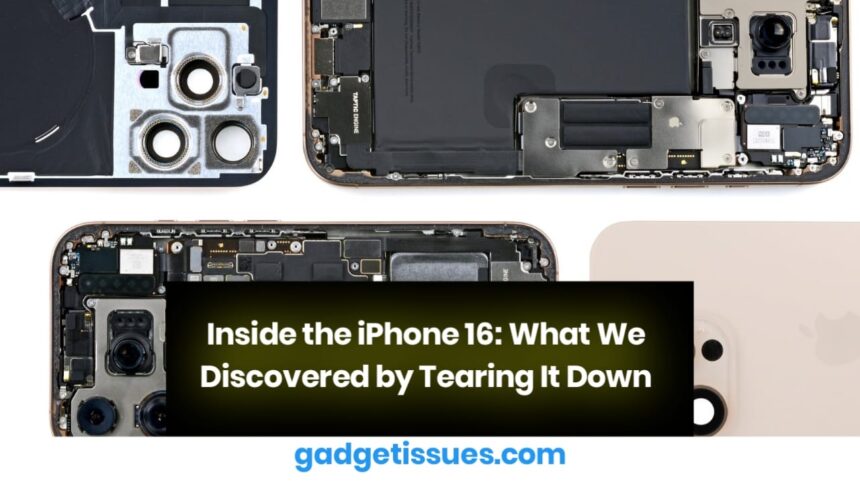The iPhone 16 is Apple’s latest flagship, promising performance improvements, enhanced cameras, and cutting-edge hardware. But what’s really going on under the hood? To find out, we took matters into our own hands — carefully disassembling the device to uncover its inner workings.
New Internal Layout for Better Cooling and Battery Efficiency
The first thing we noticed was a revised internal layout. Apple has clearly prioritized thermal management in the iPhone 16. The redesigned heat dissipation system features more efficient graphite pads and a slightly repositioned logic board. These changes are likely aimed at keeping the A18 chip cooler during high-performance tasks like gaming and 4K video capture.
The battery itself appears slightly larger, and early data suggests improved battery life — not only due to increased capacity but also better power efficiency from the new chip.

A18 Chip and RAM Upgrades
The A18 Bionic chip inside the iPhone 16 is built on a more advanced 3nm process, leading to noticeable gains in performance and power efficiency. This chip is paired with 8GB of LPDDR5 RAM, finally matching industry trends and offering more room for multitasking and machine learning workloads.
This is especially beneficial for users engaging in video editing, mobile gaming, or AI-heavy tasks like image processing and voice recognition.
Camera Module Enhancements
On opening the camera housing, we observed upgraded image sensors and stabilization hardware. The main sensor features larger pixels, which should enhance low-light photography. The new optical image stabilization (OIS) mechanism is also more robust, hinting at improved video stability and motion tracking.
Apple continues to use proprietary camera hardware, making third-party replacements nearly impossible — a move that continues to spark debates about repairability.
Modular Design Choices (Still Limited)
Although Apple has made some components more modular — like the Taptic Engine and battery — other parts such as the Face ID module and display assembly are still tightly integrated. That means even small repairs require complete replacements of larger, expensive assemblies.
This approach still raises concerns for independent repair shops and users interested in self-repair. For now, Apple-authorized technicians remain the most feasible option for repairs without voiding warranty or software functionality.
Conclusion: A Mixed Bag of Innovation and Limitations
The iPhone 16 shows Apple is making small, calculated improvements where it matters most — heat dissipation, performance, and camera quality. However, the company continues to make repairs difficult and limits user customization.
Also Read : The Myth of “High-Capacity” Batteries: What You Need to Know







